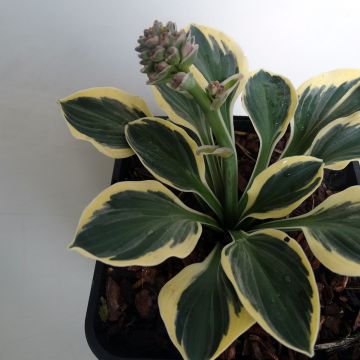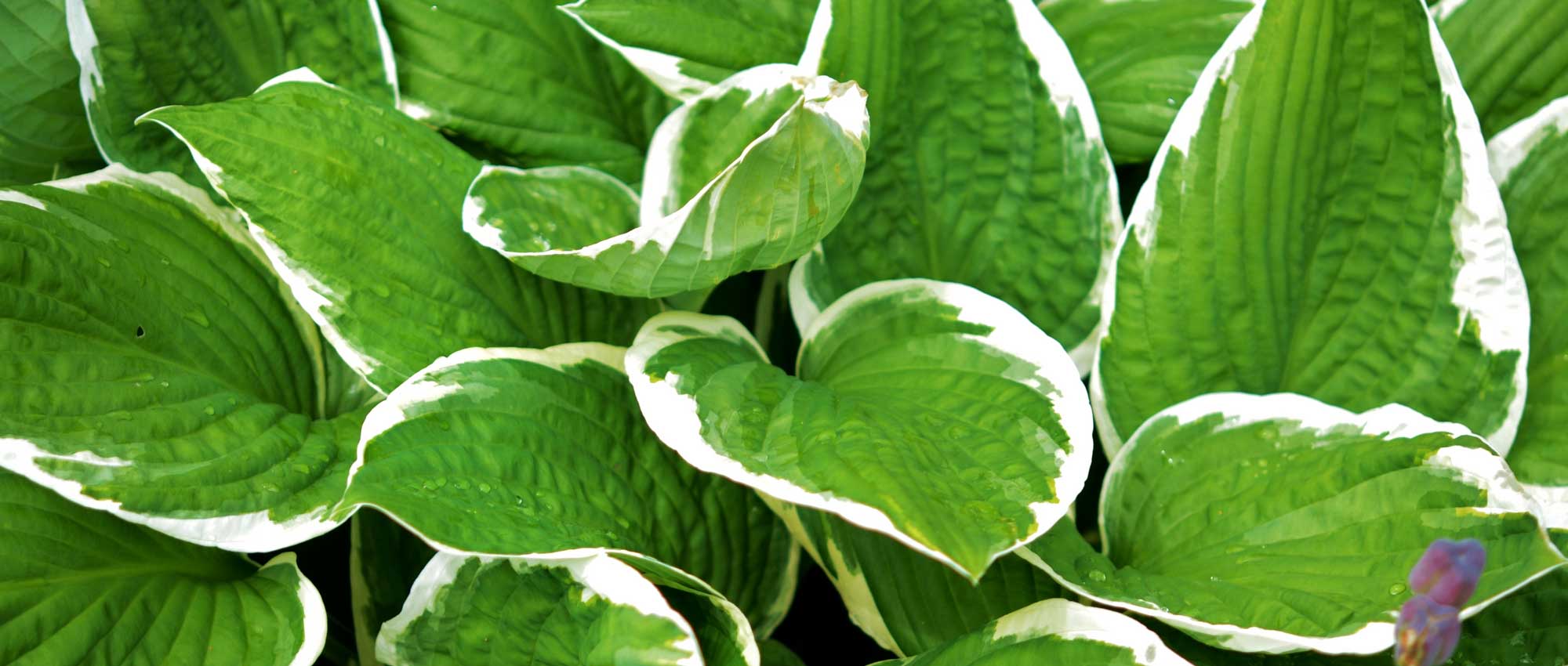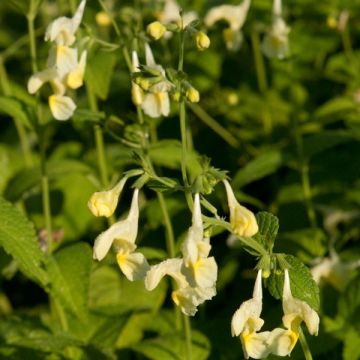

Hosta Cherry Berry


Hosta Cherry Berry
Hosta Cherry Berry
Hosta Cherry Berry
Plantain Lily, Funkia
Earth removed from the containers, even the kraft paper was not enough to protect the young plants.
Gérard G., 11/11/2019
Special offer!
Receive a €20 voucher for any order over €90 (excluding delivery costs, credit notes, and plastic-free options)!
1- Add your favorite plants to your cart.
2- Once you have reached €90, confirm your order (you can even choose the delivery date!).
3- As soon as your order is shipped, you will receive an email containing your voucher code, valid for 3 months (90 days).
Your voucher is unique and can only be used once, for any order with a minimum value of €20, excluding delivery costs.
Can be combined with other current offers, non-divisible and non-refundable.
Why not try an alternative variety in stock?
View all →This plant carries a 12 months recovery warranty
More information
We guarantee the quality of our plants for a full growing cycle, and will replace at our expense any plant that fails to recover under normal climatic and planting conditions.
Would this plant suit my garden?
Set up your Plantfit profile →
Description
The Hosta 'Cherry Berry', formerly known as Funkia, is a variety with small growth, but overflowing with colour and originality. The plant forms a bouquet of narrow and tapered leaves, cream yellow becoming white in the centre, irregularly and widely marginated with light green and deep green. In summer, thin reddish-purple flowering stems bearing small lavender bells attract all attention by forming a magnificent combination of shades with the foliage. This variety is easy to grow and succeed in cool soil; it will prefer morning sun or partial shade, in the company of perennials or even bushes.
This Hosta 'Cherry Berry' is a completely hardy perennial, with a wide clump-like habit from spring onwards. It belongs to the lily family. The plant will reach a height of 25 to 30 cm (10 to 12in) and 40 cm (16in) in flower, it will spread at least 40 cm (16in), quite slowly. It is a plant of good longevity, with narrow and elongated deciduous leaves, ending in a long tapered point, a bit like those of anthuriums. Its leaves have a smooth and satin-like appearance, and shallow undulations, with a pleasant texture. Their centre, rather yellow in spring, becomes almost white in summer, marginated with dark green. This variety also stands out for its flowering, a rare shade among hostas. It takes place in July, in the form of highly coloured flowering stems, bearing clusters of pendant small bells, grouped towards the top.
A true colour magician, this hosta will become a focal point in any border, at the turn of a pathway, on a terrace edge, even in a sunny position. It will blend well with many perennials such as astilbes, Japanese ferns, epimediums and purple acteas with which it forms beautiful duos that require little maintenance. Its foliage will hide the gaps left by spring-flowering bulbs. It will also be advantageous in the company of lungworts, brunneras and tall foxgloves or small violets. It can also be paired with semi-shade bushes such as Mexican orange, variegated hollies, azaleas. All hostas grow well in pots and can stay in the same container for several years. Choose a special geranium potting soil to use during the growing season. As long as the foliage is not too dense, you can water from the top of the pot. Then place a saucer under the pot where you pour the water, maintaining a constant level in summer.
Most species widespread in Western gardens have been introduced from Japan. Edible, hostas are called 'urui' in Japan where they are commonly consumed.
Hosta Cherry Berry in pictures


Flowering
Foliage
Plant habit
Botanical data
Hosta
Cherry Berry
Liliaceae - Hostaceae
Plantain Lily, Funkia
Cultivar or hybrid
Other Hostas - Plantain Lilies
View all →Planting and care
Hostas are planted in spring or autumn. They prefer a deep, rich, humus-bearing, loose soil, preferably neutral to acidic (at least low in limestone), and moist to wet throughout the year. Plant Hostas in partial shade or dappled shade and in a sheltered location away from strong winds.
Prepare a planting hole that is 20 cm (8in) x 20 cm (8in) x 20 cm (8in). If your soil is heavy, mix equal parts of compost with crumbled soil, partially backfill the hole, and place your potted plant so that the top of the root ball is covered with 3 cm (1in) of soil. Adding a slow-release fertiliser (dehydrated blood, horn powder) will nourish your plant during its rooting period without the risk of burning. Make sure to position the collar well above ground level. Firm the soil and water thoroughly to eliminate air pockets. If the weather is dry, you will need to water regularly for a few weeks to facilitate the establishment of your plant. Also water regularly in case of a dry summer.
With their common preference for moist areas, slugs and snails are never far from hostas. Even though blue or variegated hostas often have thicker and tougher foliage, which is less appealing to slugs, these plants must be protected from gastropods. Protect your Hostas by surrounding them with ferramol-based pellets (approved for Organic Agriculture), eggshells, coffee grounds, wood chips, or any dry and rough natural substance that repels them. Hedgehogs are the gardener's best allies in the fight against gastropods, as unlike chickens, they do not till the soil or attack the young green shoots of plants. Finally, some plants have a repulsive odour for slugs, such as wormwood and garlic.
Planting period
Intended location
Care
Planting & care advice
-
, onOrder confirmed
Reply from on Promesse de fleurs
Similar products
Haven't found what you were looking for?
Hardiness is the lowest winter temperature a plant can endure without suffering serious damage or even dying. However, hardiness is affected by location (a sheltered area, such as a patio), protection (winter cover) and soil type (hardiness is improved by well-drained soil).

Photo Sharing Terms & Conditions
In order to encourage gardeners to interact and share their experiences, Promesse de fleurs offers various media enabling content to be uploaded onto its Site - in particular via the ‘Photo sharing’ module.
The User agrees to refrain from:
- Posting any content that is illegal, prejudicial, insulting, racist, inciteful to hatred, revisionist, contrary to public decency, that infringes on privacy or on the privacy rights of third parties, in particular the publicity rights of persons and goods, intellectual property rights, or the right to privacy.
- Submitting content on behalf of a third party;
- Impersonate the identity of a third party and/or publish any personal information about a third party;
In general, the User undertakes to refrain from any unethical behaviour.
All Content (in particular text, comments, files, images, photos, videos, creative works, etc.), which may be subject to property or intellectual property rights, image or other private rights, shall remain the property of the User, subject to the limited rights granted by the terms of the licence granted by Promesse de fleurs as stated below. Users are at liberty to publish or not to publish such Content on the Site, notably via the ‘Photo Sharing’ facility, and accept that this Content shall be made public and freely accessible, notably on the Internet.
Users further acknowledge, undertake to have ,and guarantee that they hold all necessary rights and permissions to publish such material on the Site, in particular with regard to the legislation in force pertaining to any privacy, property, intellectual property, image, or contractual rights, or rights of any other nature. By publishing such Content on the Site, Users acknowledge accepting full liability as publishers of the Content within the meaning of the law, and grant Promesse de fleurs, free of charge, an inclusive, worldwide licence for the said Content for the entire duration of its publication, including all reproduction, representation, up/downloading, displaying, performing, transmission, and storage rights.
Users also grant permission for their name to be linked to the Content and accept that this link may not always be made available.
By engaging in posting material, Users consent to their Content becoming automatically accessible on the Internet, in particular on other sites and/or blogs and/or web pages of the Promesse de fleurs site, including in particular social pages and the Promesse de fleurs catalogue.
Users may secure the removal of entrusted content free of charge by issuing a simple request via our contact form.
The flowering period indicated on our website applies to countries and regions located in USDA zone 8 (France, the United Kingdom, Ireland, the Netherlands, etc.)
It will vary according to where you live:
- In zones 9 to 10 (Italy, Spain, Greece, etc.), flowering will occur about 2 to 4 weeks earlier.
- In zones 6 to 7 (Germany, Poland, Slovenia, and lower mountainous regions), flowering will be delayed by 2 to 3 weeks.
- In zone 5 (Central Europe, Scandinavia), blooming will be delayed by 3 to 5 weeks.
In temperate climates, pruning of spring-flowering shrubs (forsythia, spireas, etc.) should be done just after flowering.
Pruning of summer-flowering shrubs (Indian Lilac, Perovskia, etc.) can be done in winter or spring.
In cold regions as well as with frost-sensitive plants, avoid pruning too early when severe frosts may still occur.
The planting period indicated on our website applies to countries and regions located in USDA zone 8 (France, United Kingdom, Ireland, Netherlands).
It will vary according to where you live:
- In Mediterranean zones (Marseille, Madrid, Milan, etc.), autumn and winter are the best planting periods.
- In continental zones (Strasbourg, Munich, Vienna, etc.), delay planting by 2 to 3 weeks in spring and bring it forward by 2 to 4 weeks in autumn.
- In mountainous regions (the Alps, Pyrenees, Carpathians, etc.), it is best to plant in late spring (May-June) or late summer (August-September).
The harvesting period indicated on our website applies to countries and regions in USDA zone 8 (France, England, Ireland, the Netherlands).
In colder areas (Scandinavia, Poland, Austria...) fruit and vegetable harvests are likely to be delayed by 3-4 weeks.
In warmer areas (Italy, Spain, Greece, etc.), harvesting will probably take place earlier, depending on weather conditions.
The sowing periods indicated on our website apply to countries and regions within USDA Zone 8 (France, UK, Ireland, Netherlands).
In colder areas (Scandinavia, Poland, Austria...), delay any outdoor sowing by 3-4 weeks, or sow under glass.
In warmer climes (Italy, Spain, Greece, etc.), bring outdoor sowing forward by a few weeks.




































































